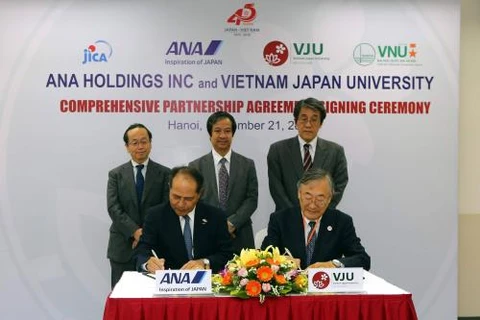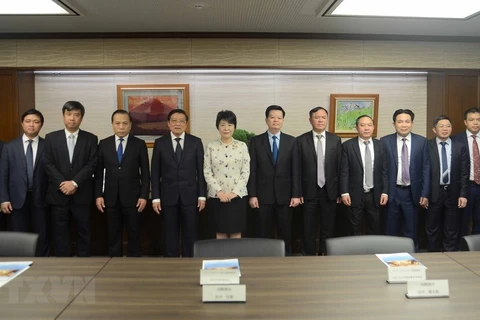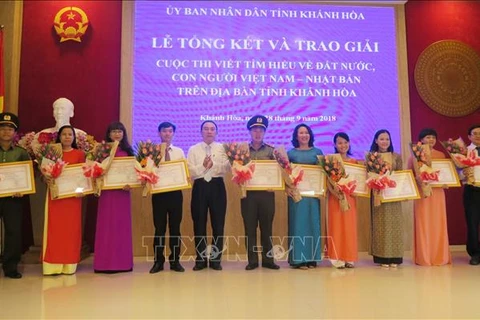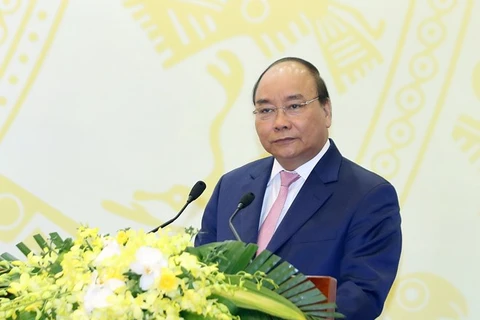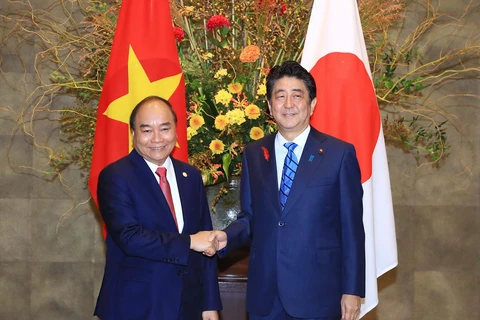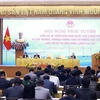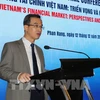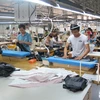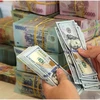Hanoi (VNA) - Prime Minister Nguyen Xuan Phuc is leading a high-level delegation of Vietnam to attend the 10th Mekong-Japan Summit in Tokyo and visit Japan from October 8-10. The trip is hoped to help lift bilateral trade to 60 billion USD in 2020.
Over the past years, Viet Nam-Japan trade relations have grown rapidly, and Japan has always been among the top four trade partners among more than 200 countries and territories exporting to and importing goods from Vietnam.
The number of Japanese companies investing in Vietnam has been on the rise along with their investment scale. Economic ties between the two countries are opening more cooperation opportunities in many areas.
After 45 years of establishing diplomatic relations, Vietnam and Japan have become increasingly important partners of each other in many fields. Since the two countries upgraded the bilateral relationship to the level of Extensive Strategic Partnership for peace and prosperity in Asia in 2014, Vietnam-Japan ties has developed strongly, comprehensively and practically.
Statistics from the Vietnamese Ministry of Industry and Trade, as of early October 2018, Vietnam’s total export value to Japan reached 13.82 billion USD, up 12.2 percent over the same period of 2017.
Japan is also one of the four markets to which Vietnam's export turnover exceeded the 10 billion USD benchmark. Especially, Vietnam enjoyed a trade surplus of 141 million USD in two-way trade with Japan so far this year.
Vietnam's export staples to Japan in the reviewed period were garments and textiles (537 million USD); transport vehicles (365.2 million USD); machines and equipment (259 million USD). Remarkably, Vietnam’s main exports to Japan recorded a stable growth compared to the same period last year.
According to a survey by the Japan External Trade Organization (JETRO), up to 70 percent of asked Japanese enterprises want to invest in Vietnam and 66.6 percent of Japanese enterprises operating in Vietnam plan to expand their production and business activities.
As of April 2018, Japan had 3,693 valid FDI projects in Vietnam with total registered capital of over 49.8 billion USD, ranking second among 116 countries and territories investing in Vietnam. This is a positive sign and a foundation to believe that the flow of of Japanese direct investment into Vietnam will continue to increase in the coming years.
Hoang Quang Phong, Vice Chairman of the Vietnam Chamber of Commerce and Industry (VCCI), said that, to attract more Japanese investments, Vietnam needs to continue reforming its administrative procedures and improving competitiveness of enterprises, increasing labour productivity, and maintaining commitments among investors, and take full advantages of cooperation potential in new fields such as agriculture and tourism, human resources training and development, transportation and distribution.
Together with the Japan-Vietnam Economic Partnership Agreement (VJEPA) and the ASEAN-Japan Comprehensive Economic Partnership Agreement (AJCEP), along with the positive economic outlook of Japan, Vietnam’s export of agricultural products, and seafood are forecasted to see bright prospects in 2018.
According to the VJEPA, the average tariff imposed on Vietnamese exports to Japan will gradually decrease to 2.8 percent in 2018.
When the agreement takes effect, at least 86 percent of agricultural, forestry and aquatic products and 97 percent of industrial products of Vietnam exported to Japan will be entitled to tax incentives.
In return, the average tariff levied on Japanese imports to Vietnam will be reduced to 7 percent by 2018.
Over the last decade, under the agreement, Vietnam and Japan have basically completed the tax reduction roadmap to build a complete bilateral free trade area. Accordingly, 94.53 percent of Vietnamese exports turnover and 87.6 percent of Japanese exports will be exempted from import taxes.
Vietnam and Japan need to promote economic cooperation by fostering cooperation in trade and investment, implementing effectively the VJEPA to realise the goal of 60 billion USD in two-way trade in 2020, Vietnamese Minister of Industry and Trade Tran Tuan Anh said.
During a meeting with Nishikawa Koya, Special Advisor to the Cabinet of Japan, Anh praised Japan as one of the first countries to ratify the Comprehensive and Progressive Agreement for Trans-Pacific Partnership (CPTPP) as well as the country’s role in leading and creating a driving force and strong influence on the ratification of the trade deal in other countries.
He affirmed that bilateral relations between Vietnam and Japan have rapidly improved and developed strongly not only in economy and trade but also in other fields.
In particular, when a series of new-generation free trade agreements have been signed, they will create a thrust to spur trade flows among nations and stakeholders, he added.
Both sides should create favorable conditions for agricultural and aquatic products to enter each other’s market, he noted, adding that action plans of six selected industries in the Vietnam Industrialization Strategy within the framework of the Vietnam-Japan Cooperation towards 2020, vision 2030 should be implemented.
Vietnamese enterprises should devise marketing strategies to promote exports to the Japanese market, Anh said, noting that this is a prerequisite for sustainable export to the Japanese market and contributes to boosting bilateral trade in the coming time.
Experts from the Ministry of Industry and Trade’s Asia–Africa Market Department warned that Vietnamese enterprises need to improve their business capacity and monitor quality standards of export goods, along with actively working on trade promotion to fully tap the potential from the Japanese market and make full use of advantages brought by the trade agreements.-VNA
VNA

